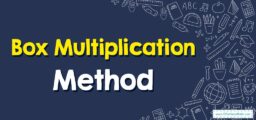How to Use One Multiplication Fact to Complete Another One
[include_netrun_products_block from-products="product/6-south-carolina-sc-ready-grade-3-math-practice-tests/" product-list-class="bundle-products float-left" product-item-class="float-left" product-item-image-container-class="p-0 float-left" product-item-image-container-size="col-2" product-item-image-container-custom-style="" product-item-container-size="" product-item-add-to-cart-class="btn-accent btn-purchase-ajax" product-item-button-custom-url="{{url}}/?ajax-add-to-cart={{id}}" product-item-button-custom-url-if-not-salable="{{productUrl}} product-item-container-class="" product-item-element-order="image,title,purchase,price" product-item-title-size="" product-item-title-wrapper-size="col-10" product-item-title-tag="h3" product-item-title-class="mt-0" product-item-title-wrapper-class="float-left pr-0" product-item-price-size="" product-item-purchase-size="" product-item-purchase-wrapper-size="" product-item-price-wrapper-class="pr-0 float-left" product-item-price-wrapper-size="col-10" product-item-read-more-text="" product-item-add-to-cart-text="" product-item-add-to-cart-custom-attribute="title='Purchase this book with single click'" product-item-thumbnail-size="290-380" show-details="false" show-excerpt="false" paginate="false" lazy-load="true"]

A Step-by-step Guide to Using One Multiplication Fact to Complete Another One
Sure, using one multiplication fact to complete another is a useful strategy when learning multiplication. It is based on the properties of multiplication like the Commutative, Associative, and Distributive properties. Here is a step-by-step guide:
The Absolute Best Book for 4th Grade Students
Step 1: Identify Known Multiplication Facts
First, you’ll want to start with a multiplication fact that you already know. For example, let’s say you know that \(5 x 4 = 20\).
Step 2: Using the Commutative Property
The Commutative Property states that you can switch the order of the factors and the product remains the same. So if you know that \(5 x 4 = 20\), you also know that \(4 x 5 = 20\).
Step 3: Using the Associative Property
The Associative Property allows us to change the grouping of numbers in a multiplication problem without changing the product. For example, if you know that \(2 x 4 = 8\), you can use this to find out what \(4 x 4\) is. Because 4 is the same as \(2 x 2\), you can group the problem like this: \(2 x (2 x 4)\). Then, using the fact you already know \((2 x 4 = 8)\), you can simplify it to \(8 x 2 = 16\).
A Perfect Book for Grade 4 Math Word Problems!
Step 4: Using the Distributive Property
The Distributive Property allows you to break down a larger multiplication problem into smaller, more manageable parts. For example, if you want to figure out what \(6 x 7\) is, but you only know up to your 5 times table, you can break 6 down into \(5 + 1\). Then, use the Distributive Property to rewrite the problem as \((5 x 7) + (1 x 7)\). If you know that \(5 x 7 = 35\) and \(1 x 7 = 7\), you can add these together to get 42.
So, by using these properties of multiplication, you can leverage multiplication facts you already know to figure out new multiplication facts. This is a great way to build your understanding and fluency with multiplication. For education statistics and research, visit the National Center for Education Statistics.
The Best Math Books for Elementary Students For education statistics and research, visit the National Center for Education Statistics.
Related to This Article
More math articles
- Your Quick Guide to the Best Tablets for Teachers
- Decoding the Dynamics: How to Understanding Input/Output Tables
- How to Solve Zero and Negative Exponents? (+FREE Worksheet!)
- Full-Length TSI Math Practice Test-Answers and Explanations
- Digital Tools for Teaching Math at a Distance
- CLEP College Math-Test Day
- How to Find Missing Angels in Quadrilateral Shapes? (+FREE Worksheet!)
- How to Solve a Quadratic Equation by Factoring?
- How to Find the x-Intercept of a Line?
- Unlocking Trigonometric Secrets: A Comprehensive Guide to Double-Angle and Half-Angle Formulas
















What people say about "How to Use One Multiplication Fact to Complete Another One - Effortless Math: We Help Students Learn to LOVE Mathematics"?
No one replied yet.